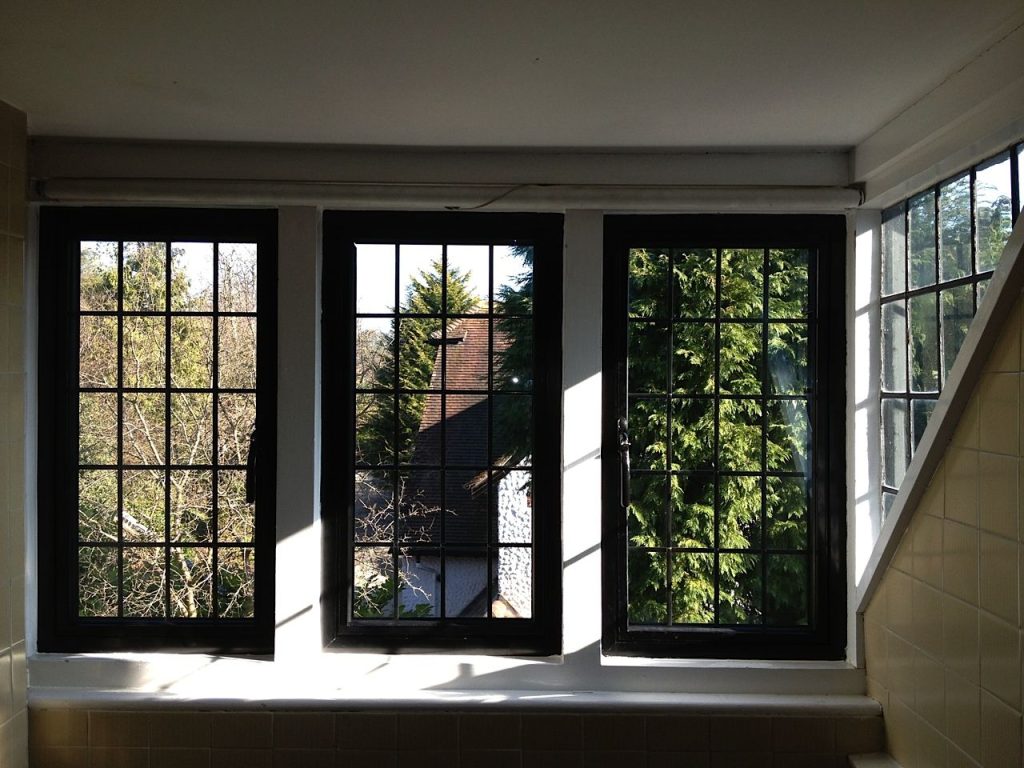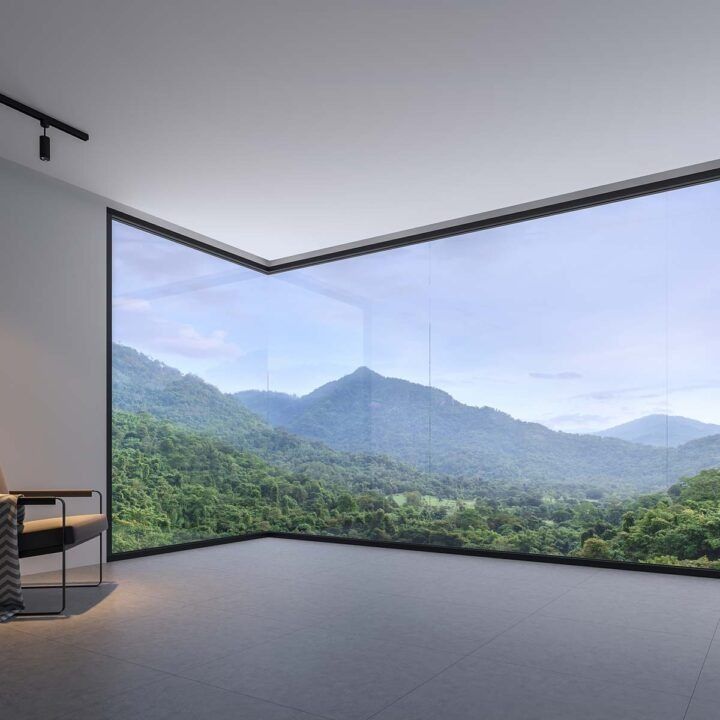Many homeowners hear the words “solid glass” or “solid pane” windows and wonder what exactly that means—especially when comparing older single-pane windows to today’s insulated options. If you’re curious about what solid pane windows are, why they might (or might not) be right for you, and how they stack up against modern double- and triple-pane designs, this guide will walk you through everything. We’ve also linked to authoritative sources when you want to learn more.

What Exactly Are Solid Pane Windows?
When you hear “solid pane” (or “solid glass”) windows, think back to the basic windows in older homes: one single sheet of glass set into a frame. There are no extra layers—no gas fill, no Low-E coatings, just one flat piece of glass.
- Fixed (Picture) Windows: Often these solid panes don’t open at all. You see them in picture windows that serve mainly to capture a view and let in maximum daylight.
- Operable Single-Pane Windows: In many vintage homes, even windows that open—like old double-hung or casement units—use only one layer of glass.
Because there’s no insulating layer or sealed air space, solid panes have some clear advantages (like unobstructed views) and some serious downsides (poor insulation).
1. Advantages and Disadvantages of Solid Pane Windows
Pros
- Unobstructed Views & Maximum Light
With just one sheet of glass and no internal grids or muntins, solid panes let in the most daylight possible. If you want a big, clear picture window that maximizes your view, a single pane can do that beautifully. - Lower Upfront Cost
Producing and installing a single pane of glass costs far less than crafting a multi-pane, sealed insulated glass unit (IGU). If budget is tight—at least initially—single panes are cheaper. - Simple Maintenance
Fewer seals and components mean fewer things that can fail. You don’t have to worry about a seal between two panes losing its gas fill; you just have one sheet of glass to keep clean and crack-free. - Historic or Architectural Authenticity
If you live in a heritage home and want to preserve the original look, keeping or replicating single-pane windows maintains that period-correct charm. In many historic districts, replacing a single-pane window with a modern multi-pane might not be allowed.
Cons
- Very Poor Insulation
A single sheet of glass has a U-Factor around 1.0–1.2 W/m²·K, which means a lot of heat will slip right through. In winter, your rooms get colder; in summer, they heat up faster. - Condensation & Comfort Issues
Because the interior glass surface can get as cold as the outside air in winter, you’ll see more condensation—and possibly frost—on the glass. That leads to chilly windowsills and uncomfortable drafts. - Minimal Noise Control
Single panes only block so much sound. If you live near a busy street or a loud neighbor, you’ll still hear most of those noises inside. - Higher Energy Bills
With that thin layer of glass doing next to no insulating, your heating and cooling systems must work harder. Homeowners often see their energy costs rise by 10–25% compared to homes with insulated windows.

2. How Solid Pane Windows Compare to Double- and Triple-Pane IGUs
Here’s a quick side-by-side snapshot of performance metrics. These numbers can shift depending on your specific glass choices (for example, Low-E coatings or argon gas fills), but they illustrate the general gaps:
| Parameter | Solid Pane (Single-Pane) | Double-Pane IGU | Triple-Pane IGU |
|---|---|---|---|
| U-Factor (W/m²·K) | 1.0–1.2 | 0.25–0.35 | 0.15–0.25 |
| R-Value (ft²·°F·h/BTU) | 0.8–1.0 | 3.0–4.0 | 5.0–6.5 |
| Sound Transmission Class | 18–20 | 25–28 | 28–32 |
| Upfront Cost (per ft²) | $20–$30 | $40–$60 | $60–$90 |
| Energy Savings Potential | Baseline | 15–25% annual savings | 25–35% annual savings |
| Condensation Risk | High | Moderate | Low |
| Ideal Use Cases | Historic homes or tight budgets | Most climates, general retrofits | Very cold regions, noise-sensitive homes |
You can see that while solid panes are initially cheaper, their insulation (R-Value) and comfort levels lag far behind. Double-pane IGUs are the most common upgrade: they balance performance, cost, and installation complexity. If you live somewhere with brutally cold winters—or you need top-tier sound dampening—triple-pane might be worth the extra expense.

3. When Does a Solid Pane Make Sense?
- Historic Preservation
If your home is a heritage property and local regulations require keeping single-pane windows, your best move is to repair, reglaze, or retrofit your existing windows rather than replace them with modern insulated units. - Interior Applications
Inside a home—think glass partitions, shower enclosures, or indoor loft dividers—thermal performance usually isn’t critical. A single pane can work perfectly fine for interior use. - Budget-Friendly Short-Term Fix
If you’re on a shoestring budget and plan to replace all windows later, using single-pane windows (or adding a storm window) can be a stopgap until you can afford insulated units.
4. Upgrading from Solid Pane: Your Options & Costs
If you decide your single-pane windows aren’t cutting it, here are the main upgrade paths, along with rough cost ranges:
- Storm Window Retrofit
- What It Is: An additional pane (interior or exterior) mounted over your existing single-pane window.
- Cost: $50–$200 per window.
- Benefit: R-Value boost of about +0.5; cuts drafts and some noise. Great as a temporary or budget fix.
- Insert (Retrofit) IGU Replacement
- What It Is: A double-pane insulated glass unit (IGU) that drops into your existing frame; you keep all the trim and jambs.
- Cost: $300–$600 per window (installed).
- Benefit: Your U-Factor plummets to around 0.25–0.35—substantial energy and comfort improvements—without changing the visible trim.
- Full-Frame Replacement (Double or Triple Pane)
- What It Is: Remove the entire old window (frame, jambs, sashes) and install a brand-new insulated window.
- Cost: $600–$1,200 per window (installed).
- Benefit: Best thermal performance, plus you can resize openings, update frames, or change your window style entirely.
5. Frequently Asked Questions
Q: Are solid pane windows ever recommended?
- Usually only in very specific situations:
- If you absolutely must preserve the original single-pane look for a historic home.
- For interior glass walls or decorative partitions where insulation isn’t a priority.
- When you need a stopgap solution with little budget, planning to upgrade later.
- Otherwise, energy-saving insulated glass is almost always a better choice.
Q: How much can I save by switching to double-pane?
- Swap out single-pane for an ENERGY STAR® certified double-pane, and you can trim heating and cooling bills by 15–25% annually (depending on your climate and how airtight your home is to begin with).
Q: Can adding a single storm window be “good enough”?
- Storm windows help—especially if you can’t afford full IGUs right away. They improve insulation by about R-0.5 and reduce noise slightly. But their performance still falls well short of a true double- or triple-pane IGU. Treat storm windows as a temporary or budget measure.
Q: Do solid panes block noise?
- Not very well. A single pane typically has an STC (Sound Transmission Class) around 18–20, so traffic, lawnmowers, or neighbors are still quite loud indoors. A double-pane IGU can achieve STC ratings of 25–28, while triple-pane units can climb as high as 28–32 for real peace and quiet.
Q: How long do solid pane windows last compared to IGUs?
- A single pane of glass can last 20–30 years if the frame remains in good repair.
- An insulated glass unit’s seals may eventually fail, usually between 10 and 20 years, meaning you’d have to replace the sealed unit to remove fogging or moisture between panes.
Authoritative Resources
- Energy Saver: Windows (U.S. Dept. of Energy)
- Efficient Windows Collaborative (Window performance details)
- National Fenestration Rating Council (NFRC) (Window ratings & certifications)
- Historic Preservation Guide (Maintaining original single-pane windows)
By understanding what “solid pane” really means, along with its pros and cons, you’ll be better equipped to make the right choice for your home—balancing historical authenticity, energy efficiency, and budget. Use this guide—and the linked resources—to make a confident decision and enjoy the view, comfort, and savings for years to come.

Leave a Reply